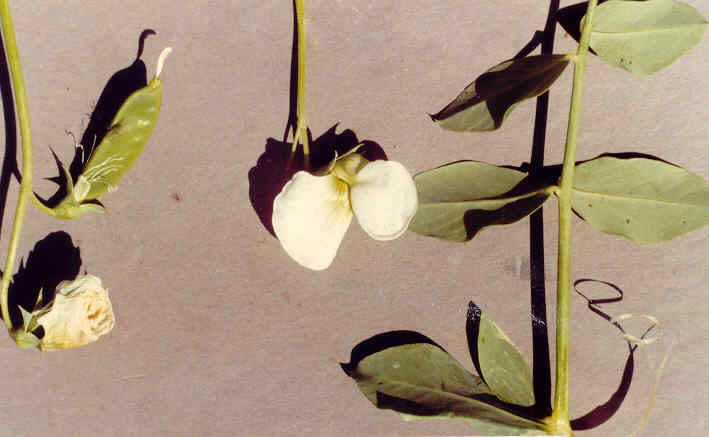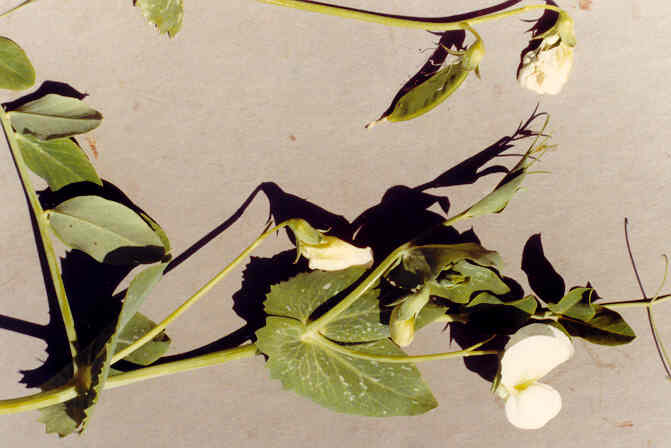
 |
Pisum sativum L.Fabaceae (Pea Family)EurasiaGarden Pea |
March Photo
Plant Characteristics: Glabrous, glaucous, annual, 1-2 m. tall, scandent; stipules mostly larger than lfts., the lower part denticulate; lvs.1-pinnate; lfts. entire, oval to oblong, 2-5 cm. long; peduncles exceeding the stipules; fls. 1-3 white, 1.5 or more cm. long, the wings somewhat adherent to the keel; stamens 9 and 1; style bearded down 1 side; pod 5-10 cm long, flattened; seeds 2-10, wrinkled or plain, mostly 4-8 mm. in dia.
Habitat: Occasional weed, escaping from cult., especially in waste places. Blooms in the spring.
Name: Pi-sum, the classical name. (Munz, Flora So. Calif. 897). Latin, satvis, that which is sown. (Jaeger 228).
General: Rare in the study area, having been found only once and this on the edge of the burn area below Eastbluff. (my comment). The origin of the cultivated pea is yet in doubt. The garden races have been separated as P. hortense, coordinate with P. arvense; and it has been held that they are derivatives of the European P. elatius. Understanding the species in a broad sense, and until further investigations have developed new evidence, it is here intended to treat all of the cult. races as forms of P. sativum. (Bailey 553). About 6 species of Mediterranean region and west Asia; grown for food and fodder. (Munz, Flora So. Calif. 466).
Text Ref: Bailey 553; Hickman, Ed. 641; Munz, Flora, So. Calif. 466.
Photo Ref: March 5-April 1 85 # 3,4.
Identity: by R. De Ruff, confirmed by F. Roberts.
First Found: March 1985.
Computer Ref: Plant Data 83.
Plant specimen donated to UC Riverside in 2004.
Last edit 8/5/05.
 |
March Photo